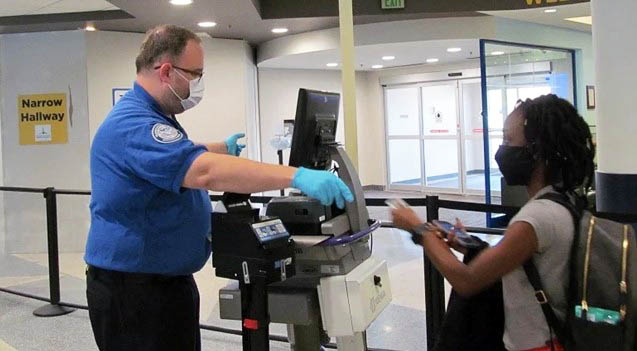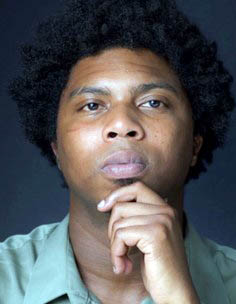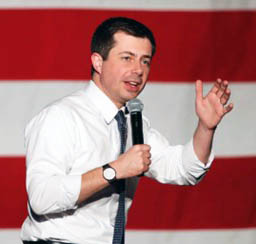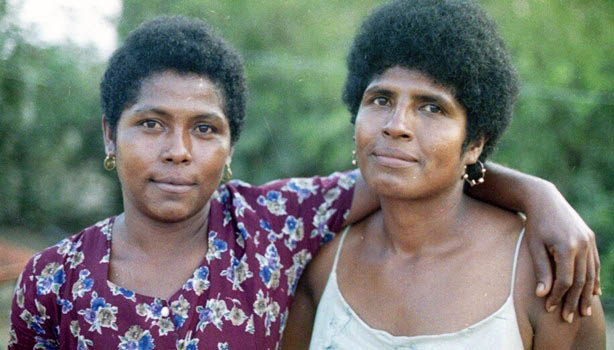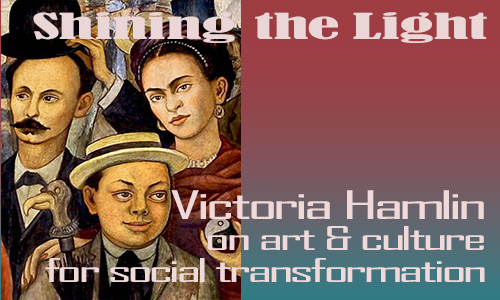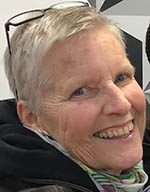|
|
|
|
The weekly newsletter of the México Solidarity Project |
|
|
|
Online at mexicosolidarityproject.org |
|
April 5, 2023/ This week's issue/ Meizhu Lui, for the editorial team |
|
|
Photo: airport-technology.com |
|
Blackness Knows No US-México Border |
|
A white friend of mine once panicked when she arrived at an airport and realized she’d forgotten her ID. Would she miss her flight? The TSA agents searched her bags, asked a few questions — and let her go on her way. My friend recounted this tale with more than a little irony. She made it through, she understood, with her “white ID.”
If you’re Black, no matter whether you have a government-issued ID or not, you can never leave behind your “Black ID,” a color coding that determines what kind of treatment you’re going to receive. And you receive that treatment, as activist Jorden Giger helps us all understand in our interview this week, whether you find yourself in South Bend, Indiana or Tijuana, México.
But Giger remains optimistic. He sees globalization rearranging people from all over the world, even in small Midwestern cities like his South Bend. That rearranging — ever so alarming to much of the white population — is allowing Black and newcomer populations to band together and challenge white rule, to interact, fall in love, and mix up the gene pool. Children in individual families are becoming rainbows.
Giger believes that those children will one day see those white and Black IDs in the trash bin of history, no more relevant than wall phones and paper boarding passes. But that day will only come if Black people and all their allies today keep pushing for it. |
|
|
|
Don’t miss an issue! Sign up for a free México Solidarity Bulletin subscription. |
|
|
|
|
Black Activism Matters on the Border’s Both Sides |
|
Jorden Giger, an NAACP member, cofounded the Black Lives Matter chapter in his hometown of South Bend, Indiana. His community organizing has won millions of dollars in home repair and rental assistance funds for low-income homeowners and other significant gains for neglected Black neighborhoods. But few know better than Giger that racist policies know no national borders. Earlier this year, he organized for the Global Exchange binational Peace Summit held in México City.
The Black Lives Matter movement made police impunity a national issue. What impelled you to become an activist in that movement? |
|
|
As a boy, I heard my great-grandfather’s stories about his days as a sharecropper. Among other hardships, he witnessed lynchings, conducted with white impunity. I traveled with him to those places in the South where no Black person could feel safe.
Trayvon Martin’s 2012 murder in Florida would be a pivotal moment for many Black millennials, including me. We realized we still aren’t safe. |
|
I went to graduate school at the University of Missouri in Columbia when Black players on the football team went on strike against racism there.
You can’t mess with football. The alumni love it, and it brings in a ton of money! White confederates flew their flags during the strike, and Black students got death threats. |
|
|
History.com |
|
I left and went home to South Bend. At the time, Pete Buttigieg was serving as mayor, and the city had no Black Lives Matter chapter. So I started one. |
|
Buttigieg began his 2020 run for president without Black support because he had failed to address the deterioration of the city’s Black neighborhood. We organized an exposure and pressure campaign that got national attention, and, as a result, Buttigieg came up with a “Plan for Black America” — and then other Democratic candidates followed suit.
That all proved to me that you can push from below and get a response.
Did your perspective include confronting violence against other populations besides Black folks? |
|
|
Why (Black) South Bend residents are warning America about Pete Buttigieg/New York Post |
|
Indiana happens to be more diverse than people on the coasts realize. We have Central Americans, Mexicans, Puerto Ricans, people from the Caribbean, Afro-Asians — and we have solidarity. I had friends who were deported, the victims of unjust colonial borders. CoreCivic, a company that owns and runs private prisons, wanted to build a detention center near us, and all our communities joined forces to stop that project.
In South Bend, we share the same spaces. Millennial and Gen Z generations live in racially mixed families. Young people today live more inclusively in terms of race and gender than in the past. In a few decades, people of color will make up the majority of people everywhere. That reality is fueling a sense of white fragility, a fear of living on a non-white planet. White supremacists can seem to be really strong these days. But I think we’re actually witnessing white supremacy’s last violent gasps.
You became an organizer for the Global Exchange US/México Summit. Why?
Our politically apathetic state of Indiana has one off the lowest voter-turnout rates in the nation. I want to find ways to encourage greater participation. I saw the US/México Summit as a way to shed light on the violence we experience and to show we’re not facing an isolated problem.
As a Black Lives Matter activist, I’ve been asked by people in my own community, “Why don’t you address Black-on-Black violence?” The Summit gave me ways to help my community see the root causes of that violence. How did all the guns, for instance, get into our communities? Black folks don’t manufacture or sell guns. Mexicans don’t either!
And where do all the drugs come from? Forces outside of our communities manufactured the drug crisis. Declassified documents show that officials, beginning with Nixon, intentionally pushed drugs into minority communities to destroy revolutionary movements like the Black Panthers that were gaining strength in the 1960s.
And then the “War on Drugs” fostered mass incarceration and police violence. Black and Brown people became labeled the criminal class. The government’s goal: that we’d never again see a movement that could ignite the imagination of the people.
This kind of narco-government exists in México too, a model exported from the US. Expand the police and military to repress the people, get in on the drug money by colluding with the cartels. Keep the system flowing: drugs, drug money, prisons, deaths.
An African-descended affinity group attended the Summit in México City. Did Afro-Mexicans and African Americans find shared issues and goals?
Racial subordination and violence — against people of African descent and indigenous peoples — exist in both the US and México. These groups are getting unfairly targeted on both sides of the border.
Look at Haitian migrants traveling through México. Sometimes they endure physical attacks in the camps on the border. Other times they get pushed to the back of the line by other migrants trying to go into the US. Once in the US, these Haitians find themselves less likely to be granted asylum.
Afro-Mexicans and African Americans face common problems that range from the lack of representation of our peoples in school curricula and the denial of land rights to violence against women and discriminatory laws. We need reparations on a global scale.
Will working for peace across borders help end racist violence and state impunity?
Yes! For African Americans, abolitionism — ending state violence against Black people in every part of the world — has become central to our ideology. We have actively resisted state violence throughout our history. |
|
The US government wants us to see Mexicans as our enemies and the cause of our problems. Meeting face to face with Mexicans, we realize that we’re looking in the mirror at people confronting circumstances much like our own.
The violence we all endure comes from the same source. |
|
|
Afro-Mexicans are pushing for legal recognition |
|
We must keep up the struggle in honor of the tenacity of our ancestors like my great-grandfather. As Black political activist Assata Shakur has said, “It is our duty to fight for our freedom. It is our duty to win.” |
|
|
Cuatro Amigos: Cross-Border Art in the Barrio |
|
A neighborhood exhibition showcasing young local artists at all stages of their involvement with art? Art doesn’t often show up that way! But it did recently when a pop-up event organized by the Spanish Speaking Citizens’ Foundation in Oakland’s Fruitvale District brought together seven local artists whose work crosses media and cultural boundaries. The artists ranged from painters and collage artists to photographers and graphics artists. |
|
Four of these artists know each other and share cross-border Mexican immigrant experiences in differing ways. The work of photographer Alex Gutierrez, a student at San Francisco State, uses a distinctive technique and color palette to tell the story of his journey as a young man. Liliana Herrera and Lola Caballero teach at local schools, and their work uses mixed media techniques that exude hip engagement and young female-ness in two different styles. Mario Navasero’s abstract paintings offer a clear, developed, personal modern expression. |
|
|
All four of these artists strikingly combine techniques and art concepts rooted both in European art practice and in current trends tied to their youth and specific experiences, the things that make them who they are. This combination of old world and new makes their work interesting and bold. |
|
|
|
Alex Gutierrez Liliana Hererra |
|
The four share some of the same experiences as people throughout the México/US diaspora, but they each bring a distinct personal expression not overshadowed by academic tradition. Art school rules, their work shows, were meant to be learned, then broken! What guides their work: the joy that art coming from the heart and soul brings to both practitioner and audience. |
|
|
|
Lola Caballero Mario Navasero |
|
Congratulations to all four of these artists. Let’s see more! And props to the Spanish Speaking Citizens’ Foundation for bringing neighborhood art to the neighborhood! |
|
Activist Vicky Hamlin is a retired tradeswoman, |
|
|
|
Recent news reports and commentaries, from progressive and mainstream media,
Kate Linthicum, Patrick McDonnell, and Gabriela Minjares, México fire toll prompts outrage, Los Angeles Times. Restrictive US and Mexican immigration policies and border enforcement efforts, says a former Biden administration official, have created the conditions that led to this horrible tragedy.
David Brooks, American curios/Al otro lado, La Jornada. Ya que al gobierno estadunidense le gusta calificar y emitir informes sobre derechos humanos sobre otros países, aquí presentamos sólo algunos (faltan muchos) de los elementos de lo que tendría que estar incluido en un informe sobre los derechos humanos en Estados Unidos.
Kurt Hackbarth, The US Government Is Complicit in the Drug Cartels’ Crimes, Jacobin. Last month, a federal US court found a former Mexican security chief guilty of colluding with the Sinaloa Cartel, after a trial showing how both the US government and its Mexican clients have been guilty of the criminal activity they’re supposedly trying to stop.
Gabriela Minjares, La tragedia de Jeison, el migrante acusado del incendio en la estación del INM en Ciudad Juárez, La Verdad. El venezolano fue asegurado en un operativo realizado en cruceros viales y recluido en la estación migratoria de donde fue rescatado con lesiones por el incendio. La semana pasada quedó detenido y acusado ante un juez de homicidio doloso, lesiones y daño en propiedad ajena.
Esther Honig, How US Policy Has Trapped Migrant Workers in an ‘Open-Air Prison’ in México, The Nation. Thanks to US border restrictions, thousands of migrants are finding themselves stuck indefinitely in Chiapas, harvesting the fruits that Americans can’t get enough of.
Carlos Montesinos, AMLO revela que muerte de migrantes le “partió el alma”; padre Solalinde presidirá Consejo de Migración, Indigo. La muerte de 39 migrantes “me conmovió, me partió el alma”, dijo López Obrador al calificarlo como el segundo momento más difícil de su Gobierno tras Tlahuelilpan.
Miriam Jordan and Edgar Sandoval, US Border Policies Have Created a Volatile Logjam in México, New York Times. México is bearing the burden of housing and feeding tens of thousands of desperate migrants.
Pedro Mellado Rodríguez, ¿Dónde están los votantes de AMLO, la 4T y Morena? Sin Embargo. La mayoría de los más de 29 millones de beneficiarios que reciben algún programa de Gobierno son la base social del más firme apoyo al Presidente López Obrador y su Gobierno. Y estarán dispuestos a apoyar al candidato presidencial que tenga la bendición del actual mandatario nacional.
Marisol Chávez, ‘They’re killing us’: anger grows after deadly fire at Mexican migrant center, Guardian. Protesters call for justice as blaze at detention facility in Ciudad Juárez highlights tough US immigration policies.
Gabriela Sotomayor, El uso de Pegasus, "como un arma militar," Proceso. Usar el spyware Pegasus para vigilar a periodistas o defensores equivale a utilizar un arma militar contra civiles y atenta contra la democracia, dijo el director y fundador de Forbidden Stories, Laurent Richard. |
|
|
The Mexico Solidarity Project brings together activists from various socialist and left organizations and individuals committed to worker and global justice who see the 2018 election of Andrés Manuel López Obrador as president of México as a watershed moment. AMLO and his progressive Morena party aim to end generations of corruption, impoverishment, and subservience to US interests. Our Project supports not just Morena, but all Mexicans struggling for basic rights, and opposes US efforts to undermine organizing and México’s national sovereignty.
Editorial committee: Meizhu Lui, Bruce Hobson, Bill Gallegos, Sam Pizzigati, Courtney Childs, Victoria Hamlin, Agatha Hinman, Steven Hollis, Daniel McCool, Betty Forrester, Jesús Hermosillo. To give feedback or get involved yourself, please email us! |
|
|
|
Subscribe! Get the México Solidarity Bulletin in your email box every week. |
|
|
|
Web page and application support for the México Solidarity Project from NOVA Web Development, a democratically run, worker-owned and operated cooperative focused on developing free software tools for progressive organizations. |

